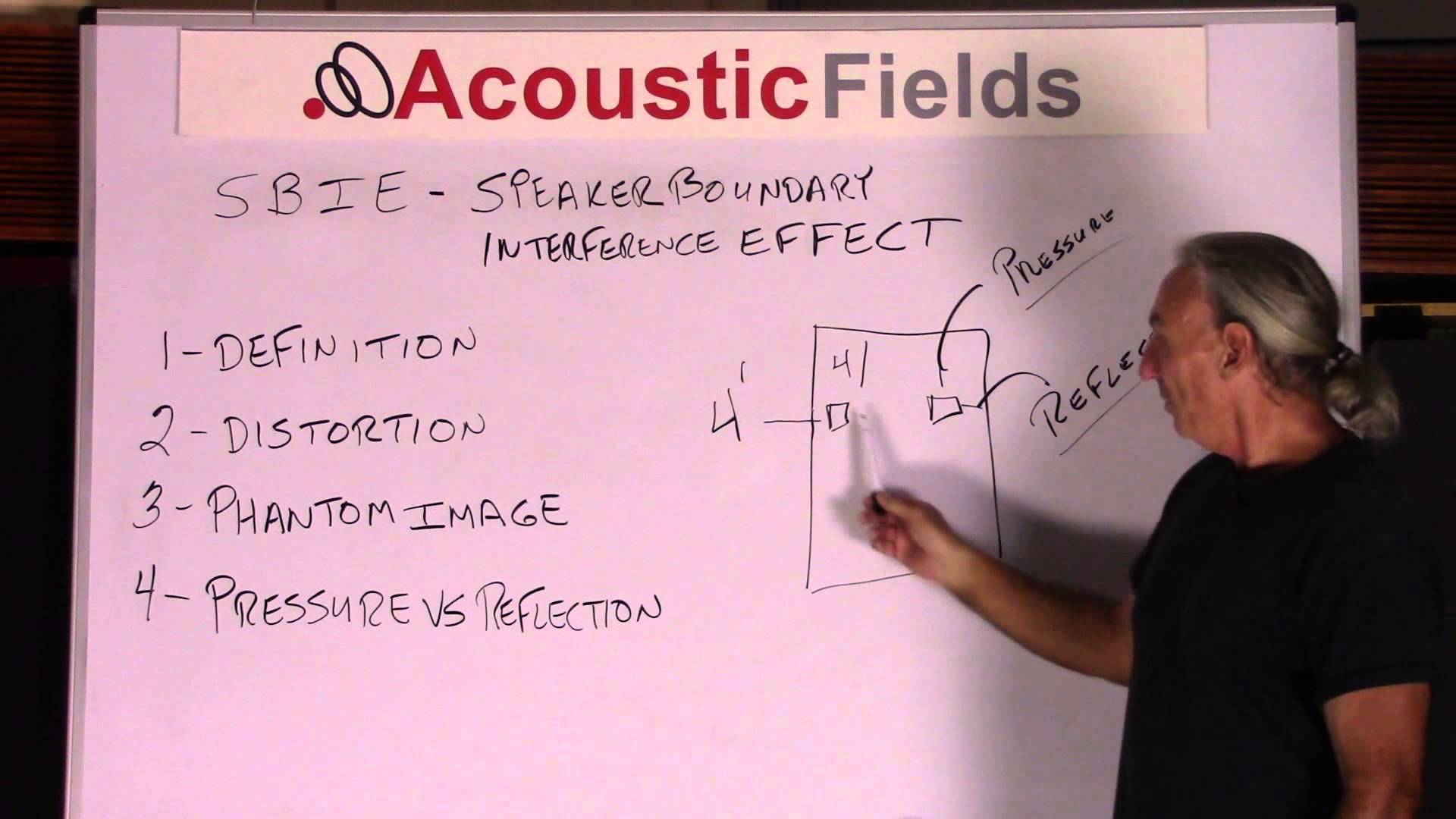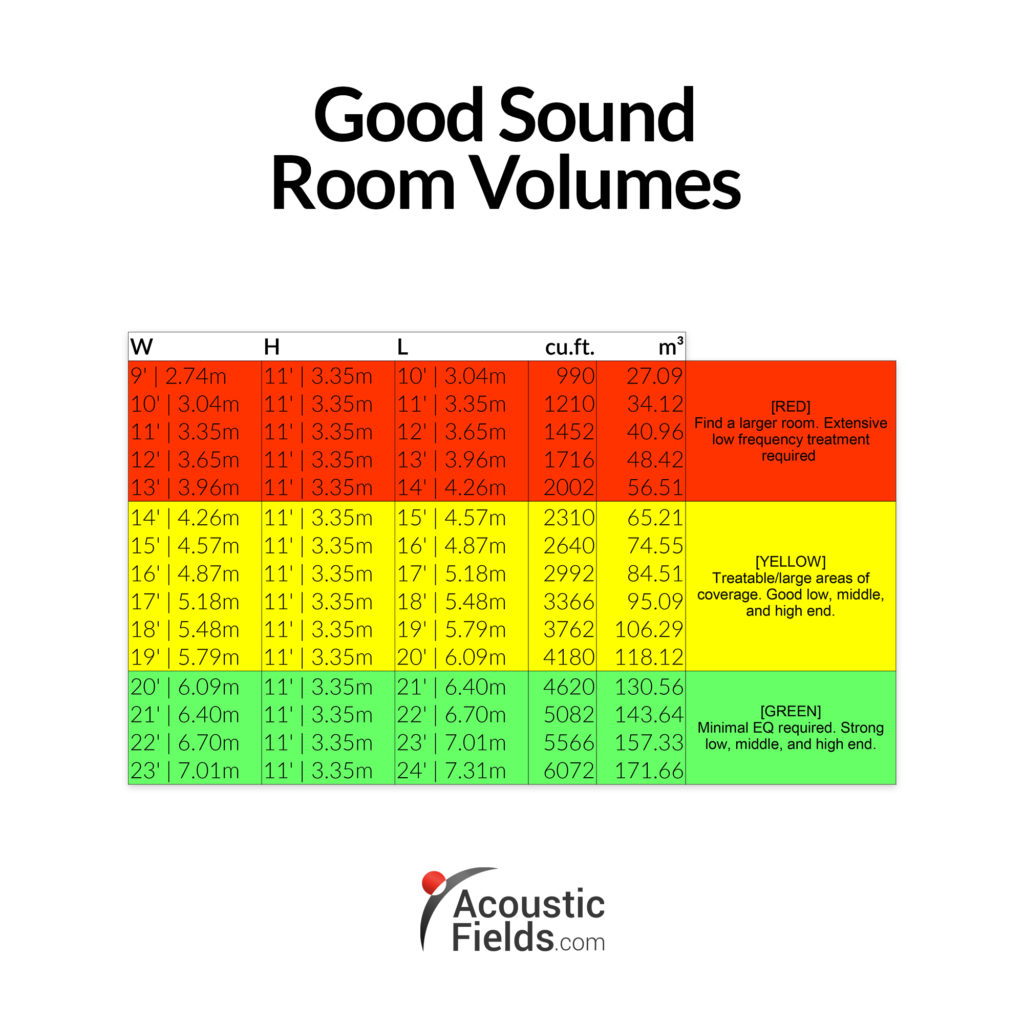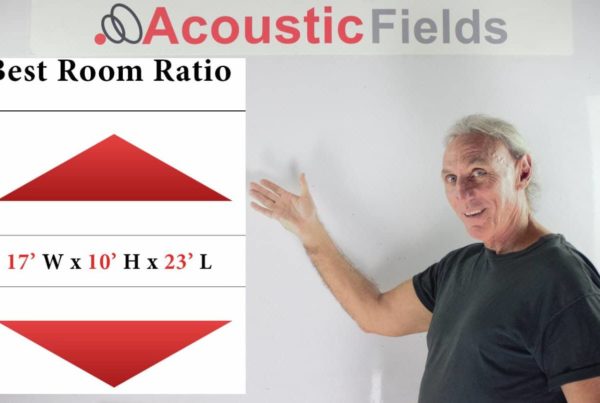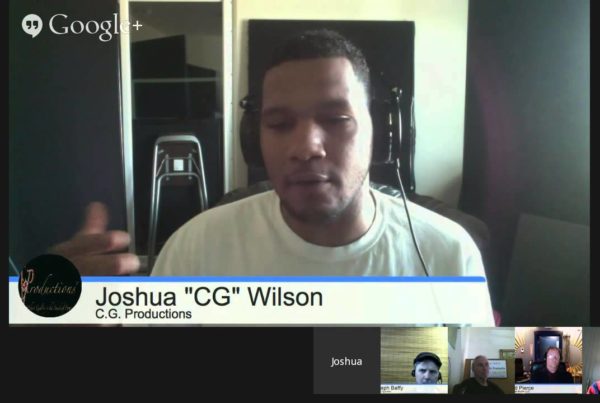I received a lot of questions in regards to my recent speaker boundary interference response video, which you can see below. So I’ve compiled them here, along with accompanying video response, so they can each be answered in turn. We have updated this blog to reflect changes in thinking and the science. Updated on 12/13/19.
1. Does Your Desk Effect Speaker Boundary Interference Response and Comb Filtering?
Well if you want to know how much the desk adds to the mix sound that you’re listening to, put a piece of foam or blanket or anything that’s really absorbent across your desk and listen and you’ll hear that. You’ll hear that reflection off the console or desk or whatever that flat surface is. So what do you have to do? You have to elevate your speakers so that you have a direct line. Most people have their speakers too low to the console so you’re automatically having reflections off the console because the speakers are so low. You raise the speakers so that the direct energy is not being impacted by the console. Are you going to be able to eliminate all the reflections from the console? No, you’re just not going to be able to but sure you can minimize them. So depending on the size of your monitor and the room you’re going to have certain frequency anomalies. Elevate your speakers and get them a little above the console. Depends on console width, depends on the size of the speaker, everything is kind of relative so elevate it.
Reverberation: https://en.wikipedia.org/wiki/Reverberation
Just a Follow-up to That What You Said, is There Any Kind of Guideline on the Height? Like You Said 4 From the Sidewalls. Is There a Guide You Can Give People?
I always tell people to get them up at least a foot but it just depends on your work surface area, how deep it is because obviously the deeper that the desk is the more surface area, the more reflections probably the higher the speaker should be to avoid that first reflection. There’s just really no ‘one-size-fits-all’ but if you have a desk measure the width, send me your monitors’ sizes that you are using and I’ll get you a good starting point. It’s a tuning process, you know you start and then you have to listen. Acoustics is science and art and it’s a balance between the two. Art will not explain anything, science explains some things and it’s the combination of art and science that gives you good quality sounds. So it’s a little bit different for each situation, depends on room width, all of these issues come into play.
2. What Are Ideal Room Dimensions for a Good Speaker Boundary Interference Response?
The guy who asked this question stated he had an 8-foot wide room. Well if your room only has an 8-foot width I’m going to tell you one thing, find a new room. So I think he might have miscopied it and most rooms are not 8-foot wide, most rooms are much wider so I don’t see that occurring that often. But if you have an 8-foot room width, I’m going to tell you to find another room because the acoustic distortions and the treatment required just to minimize them, not eliminate just minimize, would fill the whole room. Now you’d be at 7-foot or maybe 6-foot by the time we started managing the low-frequency energy in the room which we never would be able to. When the room is so small and the acoustical distortions are so large that the amount of treatment to resolve those distortions is large surface areas, it’s just not cost-effective you end up working in a closet and your sound will sound like a closet.
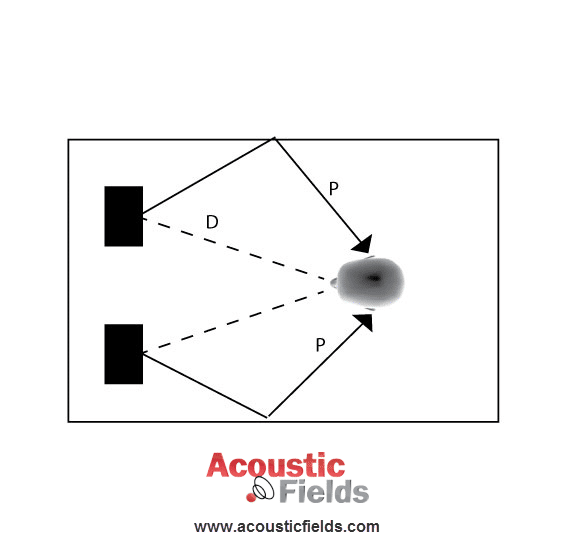
First Order Reflections
A Leaking Dam
Well I wish that was the case, I wish the energy would go somewhere else and not stay in the room but the bottom line is you know there are just certain minimums that we have to have. There are certain minimums in width, length, and height for two reasons:
1. For reflection management and
2. For low-pressure, low- frequency management.
There are minimums that we have to look at and if you send me your room dimensions and I run it against our database and I see all these issues I’m going, to be honest with you and tell you to find another room. We just got a submission from a customer who had a 45-degree slanted ceiling. Well, can you imagine? I mean it’s a big ceiling but it’s slanted at 45 degrees.
How do we manage that? You don’t, you find another room. There’s a situation, it’s just as bad, I mean it was a high ceiling, I think it was 12 feet or something like that but it angled at 45 degrees. How are you going to manage all that? You’re not going to be able to, so it’s just best to find another room and you’ll be way better off.
3. Why is Four Foot a Good Starting Point in Speaker Boundary Interference Response?
I think we’re just taking this a little bit too literally, you know we’re back to the science. Give me the exact number, give me the exact reason why you need to do that and this is not that situation. The 4-foot that I gave to people was a starting point, that’s what I use when I set systems up because I just realized over the years that that number seems to work really well.
Why is that the case? Well, there’s a scientific explanation for that, well I’m sure there are all kinds of reasons that I could work-out and come up with. But it’s a start and everybody needs a start and there are no absolutes so I just offered that as a guideline based on my experience. And is that where you’re going to end up? I don’t know. It just depends, there are just too many variables but I find with a lot of people they’re so confused because there are so many questions in their head because they heard so much conflicting information. They don’t know how to start so I tried to give them a starting point and then you know they send me an email or call me and say “Okay here’s what I hear” and then we move depending on what they’re hearing. So it’s a tuning process and the 4-foot is a start point.
4. With Speaker Boundary Interference Response, Do You Need Empty Space Between the Speaker and Wall?
You can’t have anything in that space and here’s why. What are we trying to do to the listening position? We’re trying to create a balance between the direct energy from the speaker and the reflections. So we need open space because we need that direct energy or the straight-line energy from the speaker. That’s easy, we can kind of see that we’re staring at our speaker. We know that sound coming straight from the speaker, the straight-line direct sound but then we also have sounds striking the walls and then it’s coming back and mixing with the direct sound.
Direct Sound: https://en.wikipedia.org/wiki/Sound_localization
Direct Vs. Reflected Sound
So we have this direct and reflected, direct and reflected we have this whole interplay, marriage if you will between direct and reflected energy. If we put something in that space, we have directly reflected off the wall and then reflected off whatever object is in that space. So we can’t have any obstructions in that space. It has to be free because we need to manage the time-signature of that reflection.
Primary, Secondary, Tertiary Reflections
What we’re finding, and I’ve been doing some testing in the studio, is the first, second and third reflection point on the walls, there needs to be kind of a different rate and level almost for each reflection point. More on that later as I get further into this but I’m finding that maybe not using absorption across the surface at the same rate and level might not be the complete answer we’re all looking for. There could be some stages and some intervals in absorption rates and levels we need to look at and that’s what we’re doing in the facility now.
Many Variables
But nothing in that space, nothing in the sound triangle, nothing between the speakers and the wall and the 4-foot distance. A lot of people wondered how I came up with that, it’s a starting point, that’s the starting point. Is it the point that you’re going to be in your room? Unknown. You know maybe it’ll be more, maybe it’ll be less? But use 4 feet as a starting point we always find that in our room set-ups and the people that we’ve been helping in the field and stuff doing things that 4-foot is a good starting point.
I saw some speakers the other day, a set-up the other day that a client sent to us. He had taken the center chair of his home theater system and he split it, which is a good idea, you know just put a left-center and a right-center then he had a left and a right channel and the left and the right channel were right up against the wall. So you can’t create more problems than you’re trying to solve in room acoustics and the motto here is kind of like the doctors’ use “Do no harm”. So if you can’t maintain those distances and you can’t set-up your system in a way that allows for that free space, you got to find another room.
Reflection Treatment Management
The most cost-effective treatment technology for reflection management is open-celled acoustic foams. To manage reflections you need to cover the offending surface areas with the foam technology. You hang a series of panels that contain the foam technology on the surface area. To determine the number of panels you require, we must look at room usage.
Studio Pro Foam: https://www.acousticfields.com/product/acoustic-foam/
Learn More About Us At Acoustic Fields: https://www.acousticfields.com/about/
In Summary
I hope these videos and Q&A on speaker boundary interference response was useful. If you would like to learn more about room acoustics please sign up for my free videos and ebook by joining the mailing list here. I send room tuning tips and things for you to test in your room every Wednesday. They are easy to follow and really help you enjoy more of your music. And if you would like your room acoustic issues analysed for free by me then please fill in the form here and I will be happy to take a look for you.
Thanks and speak soon
Dennis


